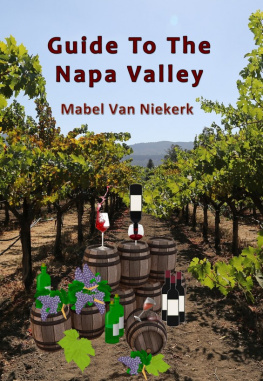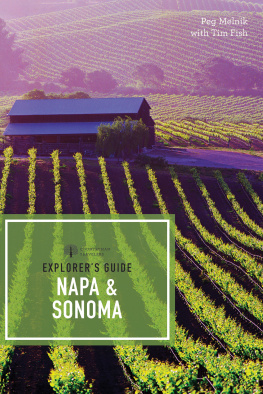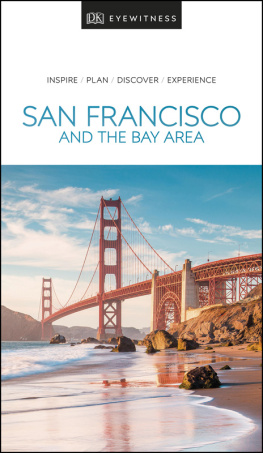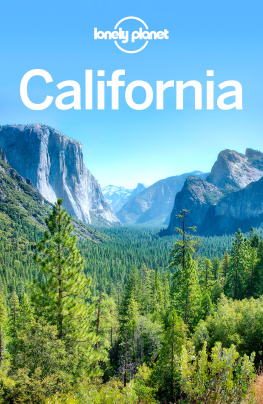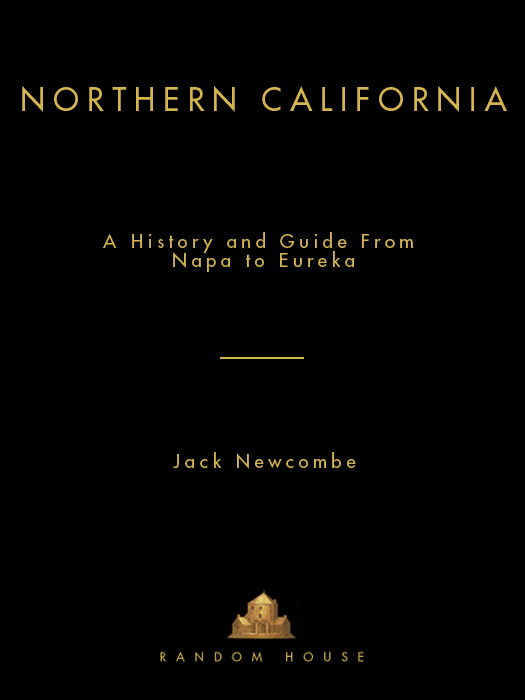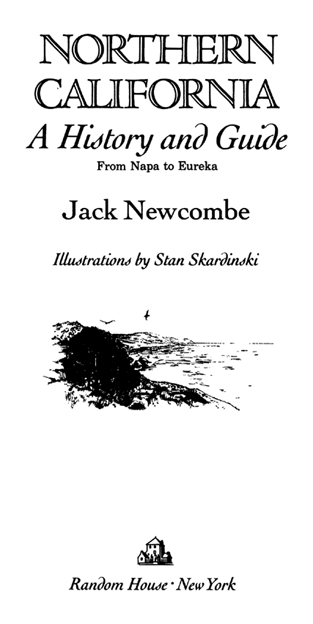Copyright 1986 by Eugene Newcombe
All rights reserved under International and Pan-American Copyright Conventions.
Published in the United States by Random House, Inc., New York, and simultaneously in Canada by Random House of Canada Limited, Toronto.
Library of Congress Cataloging-in-Publication Data
Newcombe, Jack.
Northern California: a history and guidefrom Napa to Eureka.
1. California, NorthernDescription and travelGuide-books. 2. California, NorthernHistory, Local. I. Title.
F867.5.N684 1986 917.9410453 86-10133
eISBN: 978-0-307-75764-7
v3.1
CONTENTS
INTRODUCTION
T he geographic appeal of Californias North Coast and its related ridges and valleys can come directly and easily enough from a map of the region: the river-broadened valleys point as vividly as fingers in north-south directions; the ranges pose a challenging barrier to the ocean front; and the coast itself marks a sharp, if irregular, definition between land and sea. There are not the outer banks, penetrating bays or estuaries one encounters along the East Coast. Northern Californias western border takes an abrupt stand against the vast Pacific.
But the unique appeals located here must be personally discovered. It is country of swift changein climate, in terrain, in the use that occupants make of the land. I have sat on Manchester Beach in mid-January against driftwood, being comfortably warmed by the low sun and watching the winter surf slam spectacularly against the shore. From the top of a flowered Mendocino ridge in late spring, I have looked east toward the Sierra where winter still was traced in broad white strokes. In September, after a night of harmonizing coolness among Sonoma vineyards, I have had to take refuge under a eucalyptus to escape midday heat that only the deserts beyond Barstow deserve. I have waited for the dense fog extending the night around Humboldt Bay to lift and dramatically reveal a commercial marina shining with hope for the new day, however meager the fishing hauls have become.
The surface of Northern California is quilted with contrasts: the wild and preserved groves of the great redwoods, as primeval as forests can appear to us; the headlands grassy cover flattened by the steady ocean wind; the rich seasonal presence of rhododendron and poppy, of lilies and foothill lupine; the trim brown grids of grape vines in early winter; scrub oak and manzanita thriving on the steep flank of a ridge; the surprising ridges themselves, which rise so quickly above planted fields and the intermittent towns with their new, semiattached developments.
As a Vermonter, I have viewed Northern California with a mixture of familiarity and the astonishment that comes when confronted with the new. The two states have similar longitudinal shapes and physical characteristics of forested peaks and picturesque valleys. Vermonts western border, Lake Champlain, is hardly a drop in Californias Pacific, but it provides the benefitsand hazardsof deep water, hard waves and winds. Perhaps my analogy stops here because there is no match in America for Californias diversity or the choices it offers in recreation, road travel, light, weather or raw scenery.
I have often wondered how much the sight of the stunning country provoked the early Mexican explorerswho, as the first colonists, became Los Californiosor the American pioneers who made the long passage from the East and Midwest to claim the territory. And there were the Indians, the only occupants for hundreds of years, who surely spent their seasons working the land, fishing the rivers and coastal waters, and probably found little time to celebrate the beauty that surrounded them. They did, of course, offer thanks for what the land provided by blessing the early fruits of spring and by ceremonies that prepared for the vital acorn harvests in the fall.
As elsewhere, Northern Californias Indian past seems to have been all but erased. True, it survives in historical society archives, in some museums, in influences on contemporary art (such as the ubiquitous craft of basketweaving), in the numbers of rancherias that remain populated by descendents of survivors of Indian wars and white mans diseases. Yet the Indian names remain: Arcata, Napa, the Mayacamas Mountains, Ukiah, Gualala, Petaluma. They blend pleasantly with the sounds of the place names that the Spanish-Mexicans left behind.
The most northern of the 21 missions formed in California by the padres of the New Spain, San Francisco Solano in Sonoma, was employing and converting Indians by 1823. Although the missions did constitute a first network of white outposts along the coastal frontier, it took the appearance of Mexican military leaders and an ambitious land-grant system to place Northern California under Mexican control, however briefly. Mariano Vallejo and Cayetano Jurez are the famous pioneer namesmilitary men who controlled wide fiefdoms, granted to them by their government, and who parceled out land to cooperative American settlers. After California in 1825 became a territory of Mexico (which had just gained independence from Spain), they assumed the roles of leaders and protectors, roles the mission friars were not equipped to handle. Their presence discouraged the Russian fur traders from extending their bases farther south. By the time of the American takeover, these grantees were the large developers of crops and livestock.
Both Vallejo and Jurez were influential in the transformation of California following the Treaty of Guadalupe Hidalgo in February 1848, which led to Californias admission to the Union. The Mexicans and the eastern adventurers and traders who had earlier answered the call to California were soon joined by the thousands who charged into the high valleys and mountains seeking gold and silver in the late 1840s. Many in this invasion eventually decided that mining prospects were very thin but that a living could be made in growing fruits and grains and in harvesting the thick forests.
The new population came via the long overland wagon routes and by the even-longer passage around Cape Horn. Sierra mining camps may have been built overnight, but it took longer to erect the lumber and fishing towns that dotted the Northern California coast and that stand today in their modern, modified shapes. There were no quick, mother lode fortunes to be made in the production of oak tanbark or railroad ties or lumber lengths, but there was employment in an industry with a future. (Unfortunately for the land itself, the demand for, and yield in, timber were so high that vast old-growth forests were quickly and heedlessly logged over.) The valleys, with their ocean-influenced climate, attracted immigrant farmers who learned that there were both self-sufficiency and profits to be had in the growing of vegetables, fruits, and nutsand in extending the production of hops for the new breweries and of grapes for the new winemakers. California had approximately 200 wineries within the first four decades of statehood.
Northern Californias Mexican- and American-made past is so close, compared with that of New England, that visitors feel as if they can reach out and touch it. The Victorian buildings in towns, the landmark wine cellars, the original health spas, the first community churches or schoolhouses have received but recent restoration or preservation status. Yesterdays log-hauling railroad that winds over the coastal ridge is todays popular sightseeing route; the showcase home of the nineteenth-century lumber baron is the brightly painted focus of tourists cameras. Yet the strongest sense of the regions past comes from what was there when the early settlers arrived: the sweeping, uninhabited land of big trees, the eroded streambeds and low valleys and, always, the ocean.


